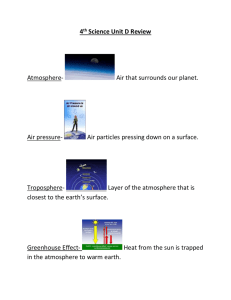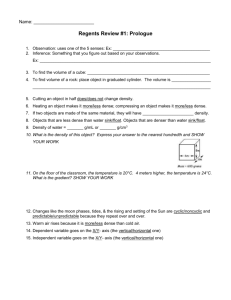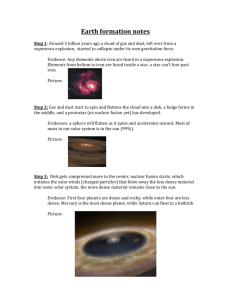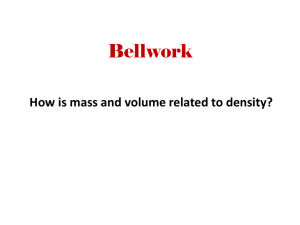Dense Matching
advertisement
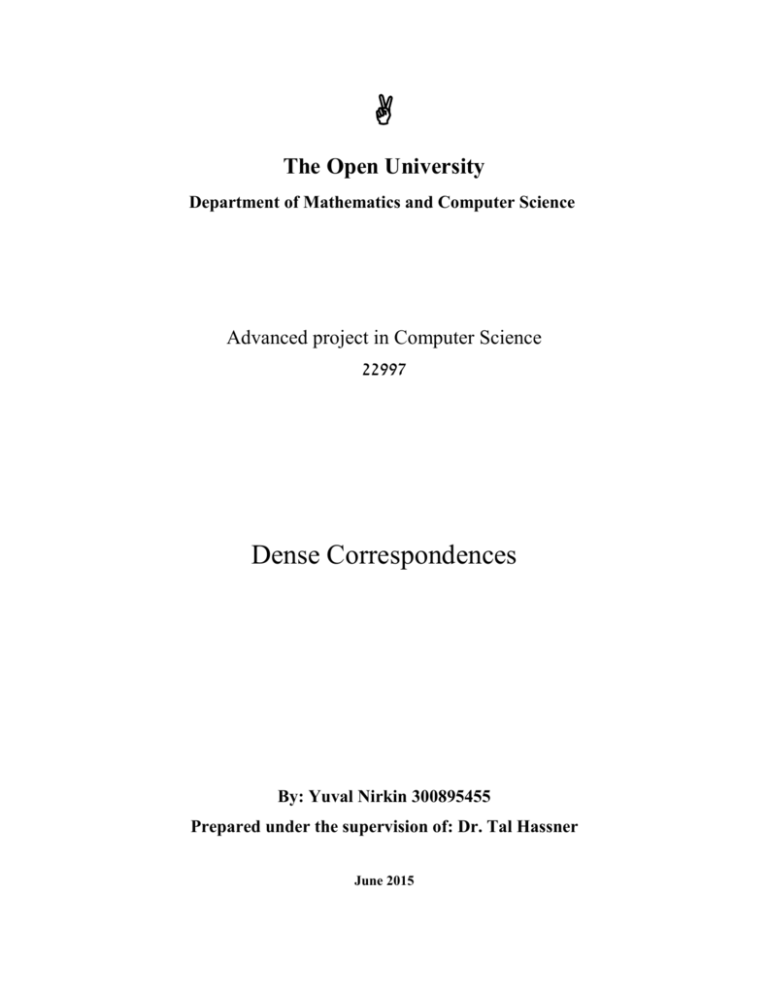
The Open University Department of Mathematics and Computer Science Advanced project in Computer Science 22997 Dense Correspondences By: Yuval Nirkin 300895455 Prepared under the supervision of: Dr. Tal Hassner June 2015 Brief The objective of this project was to apply SIFT-flow into 3D reconstruction. The SIFT-flow and scale propagation algorithms were integrated into an existing 3D reconstruction pipeline, provided by OpenMVG. Part of the SIFT-flow code was available in C++ and the rest had to be converted from Matlab, in order to be fitted in the pipeline and for better performance. The 3D Reconstruction Pipeline The pipeline is based on OpenMVG’s pipeline and includes the following modules: 1. Sparse matching – Matching all possible image pairs using SIFT descriptors on sparse keypoints. 2. Dense matching – Matching all possible image pairs using SIFT images. 2.1. For each image pair find their scale maps using the matched sparse SIFT descriptor’s scales as seed. 2.2. Calculate the SIFT images of each image pair using their scale maps. 2.3. Do 2-sided SIFT-flow for every image pair and save pixel pairs that moved to each other as matches. 2.4. Optionally filter matches from pixels that are in textureless regions. 2.5. Apply geometric filtering. Using RANSAC on the matches of each image pair to find the corresponding Fundamental Matrix. A pair of matching points that is too far from the corresponding epipolar lines are than filtered out. 3. Incremental SfM – Calculate the camera’s 3D poses and the scene’s 3D point cloud from the image matches. Dense Matching Scale Maps Given an image pair and sparse matches with scales between them, the objective is to find the best scale for each pixel in the images to improve the dense matching. For each image separately we use the given keypoint’s scale as seed to build a large sparse linear system. The relationship of each pixel with its neighbors is determined by the intensities of the pixels and a weight function, which can be either linear or exponential. The solution of the linear system is the image’s scale map. SIFT Images SIFT images are created from an input image by calculation a SIFT descriptor for each pixel. If scale maps are enabled than the scale for the SIFT descriptor will be taken from the image’s scale map, in that case the SIFT image must be calculated twice for each image pair. The orientations of the SIFT descriptors are always 0. The SIFT images for this project are allocated as one block of contiguous memory, this imposes limitation on the size of the input images. SIFT-Flow We used SIFT-flow with a course-to-fine matching scheme. First the SIFT image pyramids for both images had to be created by first applying a Gaussian filter and then rescaling each pyramid by 0.5 with Bicubic interpolation. Then for each pyramid level the actual SIFT-flow is calculated and propagated to the finer level. This procedure is then calculated both from the source image to the target image and from the target image to the source image. The following images show the result on SIFT images with scale maps: Image1 Image2 Flow Warp Textureless Regions Textureless regions are areas in the image that contain little relevant information. When there are large textureless regions in the matched images, there will be a large amount of pixel matches that do not fit the geometric restrictions of the relative poses of the cameras. The following figure shows an example of such situation. The yellow lines connect matched pixels between the images: Image1 Image2 Putative matches Filtered matches In order to avoid such situations, matched pixels in textureless regions must be filtered out before the geometric filtering. To detect only large textureless regions we use a sliding window on the image and calculate the average length of the gradients in it for every pixel. If the average length is under a certain threshold than the current pixel will be flagged as textureless. The following figure shows an example of the detected textureless regions: Pixels in white are textureless and the rest of the pixels are black. Image1 textureless regions1 Image2 textureless regions2 Results Sceaux Castle 11 images of 708 by 532: Reconstruction: Front Sparse Dense Dense + Scalemaps Left Right Top Kermit 11 images of 640 by 480: Reconstruction: Front Sparse Dense Dense + Scalemaps Left Right Top Grizzly Bear 13 images of 640 by 480. The images were taken by a regular mobile phone’s camera: Reconstruction: Front Sparse Dense Dense + Scalemaps Left Right Top Timing All the experiments were executed on the same hardware which includes: - Intel Core i7 5820K overclocked to 4.0Ghz. - 4x4GB DDR4 2400Mhz - 1TB SSD SceauxCastle Average Timing [s] 11665.4 4010.57 5.92578 8.85 4478.16 5569.23 SPARSE DENSE DENSE + SCALEMAPS Matching Incremental SfM Kermit Average Timing [s] 358.638 318.948 1655.22 1370.46 3.19 4.37 SPARSE DENSE Matching DENSE + SCALEMAPS Incremental SfM Grizzly Bear Average Timing [s] 945.95 944.366 1907.88 1567.54 9.64465 2.76 SPARSE DENSE Matching DENSE + SCALEMAPS Incremental SfM Bibliography [1] Adaptive structure from motion with a contrario model estimation. Pierre Moulon, Pascal Monasse, and Renaud Marlet. In ACCV, 2012. [2] C. Liu, J. Yuen, and A. Torralba, “SIFT flow: Dense correspondence across scenes and its applications,” Trans. Pattern Anal. Mach. Intell., vol. 33, no. 5, pp. 978–994, 2011. [3] M. Tau and T. Hassner, Dense Correspondences Across Scenes and Scales. arXiv preprint arXiv:1406.6323, 24 Jun. 2014


